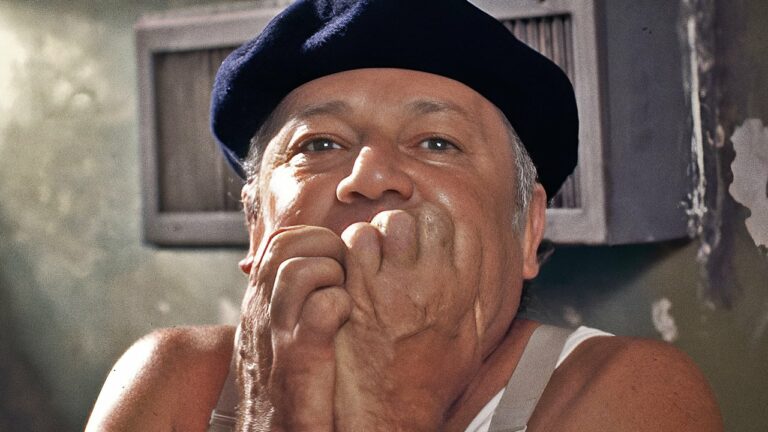
Under the Tuscan Sun, directed by Audrey Wells and released in 2003, is a heartwarming and visually stunning film that tells the story of self-discovery, resilience, and transformation. Based on Frances Mayes’ memoir of the same name, the movie follows the journey of a recently divorced writer who impulsively buys a crumbling villa in the idyllic Tuscan countryside and embarks on a journey to rebuild not only the house but also her life.
This article delves into the film’s narrative, themes, cinematography, performances, and its lasting impact on audiences who continue to find inspiration in its charming portrayal of personal growth and the Tuscan lifestyle.
Plot Summary: A Journey from Heartbreak to Renewal
The story begins with Frances Mayes (played by Diane Lane), a San Francisco-based writer whose seemingly perfect life unravels when she discovers her husband’s infidelity. Her subsequent divorce leaves her in an emotional and creative rut. Encouraged by her best friend Patti (Sandra Oh), Frances takes a break from her gloomy reality and embarks on a guided tour of Tuscany.
During the trip, Frances stumbles upon a dilapidated villa named Bramasole, which she impulsively purchases. What follows is a journey of rebuilding—not just the villa but also her shattered sense of self. Along the way, Frances navigates cultural barriers, befriends colorful locals, and discovers the simple joys of Tuscan life. Her interactions with characters like the free-spirited Katherine (Lindsay Duncan) and the romantic Marcello (Raoul Bova) add depth to her journey. Ultimately, Frances learns to embrace the unpredictability of life and finds fulfillment in unexpected ways.
Themes: Life, Love, and the Courage to Start Over
1. Self-Discovery and Personal Growth
At its core, Under the Tuscan Sun is a story of transformation. Frances’ decision to buy Bramasole represents a leap of faith and a willingness to embrace change. Through the challenges of renovating the villa and adapting to a new culture, she rediscovers her strength, creativity, and capacity for joy.
2. The Healing Power of Nature
The film’s lush depiction of the Tuscan countryside underscores the restorative power of nature. The rolling hills, sun-soaked vineyards, and picturesque villages serve as a metaphor for Frances’ journey from despair to renewal.
3. The Complexity of Love
While Frances initially seeks romantic love to fill the void in her life, her experiences teach her to appreciate other forms of connection. The love she finds in friendships, community, and her passion for writing proves to be just as fulfilling.
4. Embracing Uncertainty
A recurring message in the film is the importance of letting go of rigid plans and embracing life’s unpredictability. Frances learns that sometimes, the best outcomes arise from the most unexpected circumstances.
Cinematography: A Visual Love Letter to Tuscany
The film’s cinematography, helmed by Geoffrey Simpson, is one of its most striking features. Tuscany’s breathtaking beauty is captured in vivid detail, with every frame resembling a postcard.
1. Idyllic Landscapes
From the golden fields and olive groves to the charming cobblestone streets of Cortona, the visuals transport viewers to the heart of Italy. These scenic backdrops play a crucial role in establishing the film’s uplifting and dreamy tone.
2. The Villa Bramasole
The transformation of Bramasole mirrors Frances’ own journey, and the cinematography beautifully captures this parallel. The once-crumbling villa, surrounded by wildflowers and bathed in sunlight, becomes a symbol of hope and resilience.
3. Attention to Detail
The film’s visuals also highlight the cultural richness of Tuscany, from the bustling outdoor markets to the intimate details of Italian architecture and cuisine. This meticulous attention to detail enhances the film’s immersive quality.
Performances: A Stellar Cast
1. Diane Lane as Frances Mayes
Diane Lane delivers a captivating performance, balancing vulnerability with quiet strength. Her portrayal of Frances’ journey from heartbreak to empowerment is both relatable and inspiring, earning her a Golden Globe nomination.
2. Lindsay Duncan as Katherine
Lindsay Duncan’s portrayal of Katherine, a glamorous British expatriate, provides a touch of whimsy and wisdom. Katherine’s joie de vivre and poignant reflections on life and love offer a stark contrast to Frances’ initial despair.
3. Supporting Cast
Sandra Oh shines as Patti, Frances’ loyal and supportive best friend, while Raoul Bova brings charm and passion to the role of Marcello, a romantic interest who represents the fleeting yet transformative nature of love.
Cultural Representation: A Celebration of Italian Life
Under the Tuscan Sun paints a romanticized yet sincere picture of Italian culture.
1. Food and Wine
The film celebrates Italy’s culinary heritage, with scenes featuring delicious meals, local wines, and communal dining. These moments highlight the role of food as a source of comfort and connection.
2. Community and Tradition
Frances’ interactions with her neighbors, including the jovial construction crew and a young couple planning their wedding, underscore the warmth and vibrancy of Tuscan village life.
3. Art and History
Through visits to historic landmarks and encounters with local artisans, the film pays homage to Tuscany’s rich artistic and cultural legacy.
Lasting Impact and Reception
1. Box Office Success
Under the Tuscan Sun was a commercial success, grossing over $58 million worldwide. Its universal themes of resilience and reinvention resonated with audiences across cultures.
2. Critical Acclaim
While some critics noted its departure from the memoir’s focus on renovation, most praised the film for its charm, visual beauty, and Diane Lane’s performance.
3. Influence on Travel and Lifestyle
The film sparked a surge of interest in Tuscany as a travel destination. It also inspired many to embrace the idea of starting over, whether through travel, home renovation, or a newfound appreciation for life’s simple pleasures.
Conclusion
Under the Tuscan Sun is a film that resonates with anyone who has faced life’s challenges and emerged stronger. With its rich themes, stunning visuals, and heartfelt performances, it offers a comforting reminder that even the most broken hearts can find healing in unexpected places. For viewers seeking a blend of inspiration, escapism, and a celebration of life’s beauty, this cinematic gem is as timeless as the Tuscan countryside itself.





